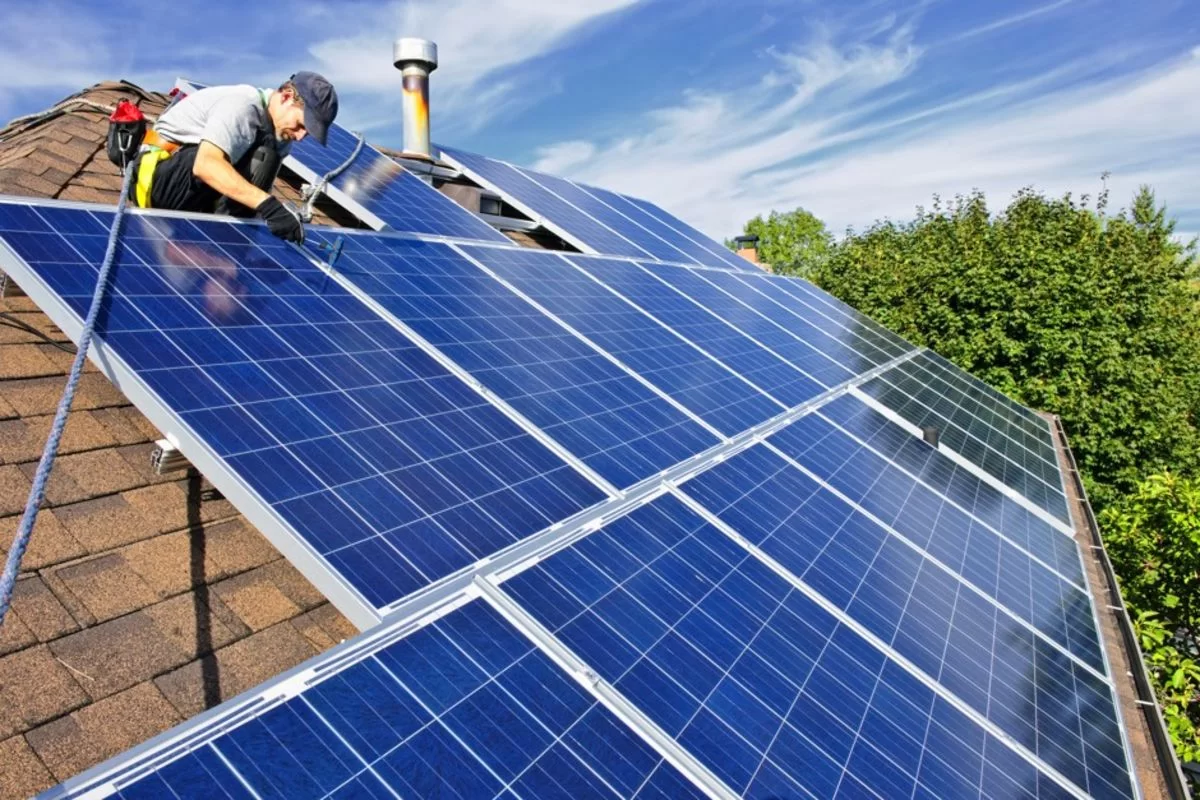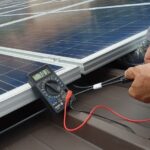Do you know what powers solar panels? Its solar inverters! They are the unsung hero working tirelessly to help the solar system function.
Solar inverters convert the direct current (DC), generated by solar panel output, into alternating voltage (AC) which is used to power electric appliances.
In this blog we are going to delve into the world of solar inverters, know its different types and future trends
So, tighten your seat belts and get ready to discover the power behind the power!
Seeking experts for solar inverter installation Holmes, NT? OneRoof Solar certified solar installers are here for you!
Type of Solar Inverters
Solar inverters come in various types, each suited for different solar panel setups and requirements. Today, we are going to discuss six types of solar inverters.
-
String Inverters
This is the most common type of solar inverter where solar panels are connected in a series, or ‘strings’ feeding into a single inverter. If your roof does not have enough shading and you solar panels are not facing different directions -you should go for string inverters.
String inverters efficiently convert DC to AC, usually with efficiency ratings between 95-98%. They centralize the conversion process for all panels connected in a string, making system design and maintenance relatively straightforward. Also, they are highly cost-effective.
2. Power Optimizer
This solar inverter offers the same benefits as a microinverter. They are slightly cheaper than microinverters. They are used in conjunction with string inverters to enhance overall system performance. Power optimizations are attached to individual solar panels and convert DC to AC right at the source. This helps enhance system efficiency and ensures that each panel operates at its maximum power point (MPP). It also aids in detailed monitoring.
3. Central Inverters
They are kind of the same as string inverters but are used in large-scale solar energy systems. Central inverters have the capacity to handle power up to 500 KW per compound. Central inverters consolidate the DC output from multiple solar panel strings into a single, high-capacity inverter unit. This centralized approach simplifies the system design and reduces overall equipment costs. This is because fewer inverters are needed compared to other configurations like string inverters or microinverters.
The main advantage of central inverters is their high efficiency and ability to handle substantial power loads. Book solar inverter installation Holmes, NT, from OneRoof Solar.
4. Microinverters
As the name suggests, there are small inverters used in solar energy systems to convert the direct current (DC) generated by each individual solar panel into alternating current (AC) for use in homes or feeding into the grid. They are one of the most common inverters used today! Unlike string inverters, which connect multiple panels to a single inverter, microinverters are attached to each panel, enabling panel-level energy conversion and optimization.
Microinverters offer you the opportunity for performance monitoring. They are beneficial in installations where shading, dirt, or panel orientation might vary, as the performance of one panel does not affect the other. They are known for their high efficiency and reliability but can be a little more expensive than string inverters.
Need help with the maintenance of commercial solar power systems? Get in touch with certified solar installers at OneRoof Solar.
5. Battery Inverters
Battery inverters play a crucial role in the design of solar systems that include energy storage. They convert the direct current (DC) from batteries into alternating current (AC) and also help manage charging and discharging the battery to ensure efficient energy storage. Batteries can be converted into 230V AC by using battery inverters. Battery inverters have become increasingly important with the rise in demand for solar energy storage.
6. Hybrid Inverters
Hybrid inverters (also known as multi-mode converters) combine solar energy conversion with battery management in a single device. Hybrid inverters enable seamless switching between solar power, battery storage, and the grid, optimizing energy use and enhancing system efficiency. They give you great value for your money by providing you a complete alternative to an off-grid solution and can provide backup solutions during a power break.
Call OneRoof Solar for all your solar inverter repairs in Holmes NT.
Future Trends in Solar Inverter Technology
Here is a glimpse of what the future holds in solar inverter technology:
Smarter Inverter Technology with Advanced Monitoring
Inverters will become smarter, and they’ll provide you with real-time information on their performance and energy production.
Enhanced Grid Integration and Resilience
Inverters will play a crucial role in seamlessly disconnecting and reconnecting a solar system to the grid during outages, minimizing disruption for businesses in Holmes. Also, the integration of solar storage is becoming extremely important. This increases the flexibility and potential for saving on solar installations.
Improved Reliability and Durability
Advancements in materials and cooling technologies in inverters will contribute to their longer lifespan, reducing replacement costs for businesses. Install the best commercial solar panels Holmes NT from OneRoof Solar today.
Final Thoughts
A solar inverter is the essential component of translating the sun’s potential into practical energy solutions. They are not only responsible for converting the energy but also ensure that your solar system operates optimally. In true words, solar inverters are more than just converters; they are gatekeepers of solar efficiency.
What are you waiting for? Invest in a solar inverter today!
Already have a solar inverter? Hire an expert solar inverter installation Holmes, NT, from OneRoof Solar. OneRoof Solar is a one-stop solar solution company in Holmes that guarantees coverage on both equipment and workmanship.







